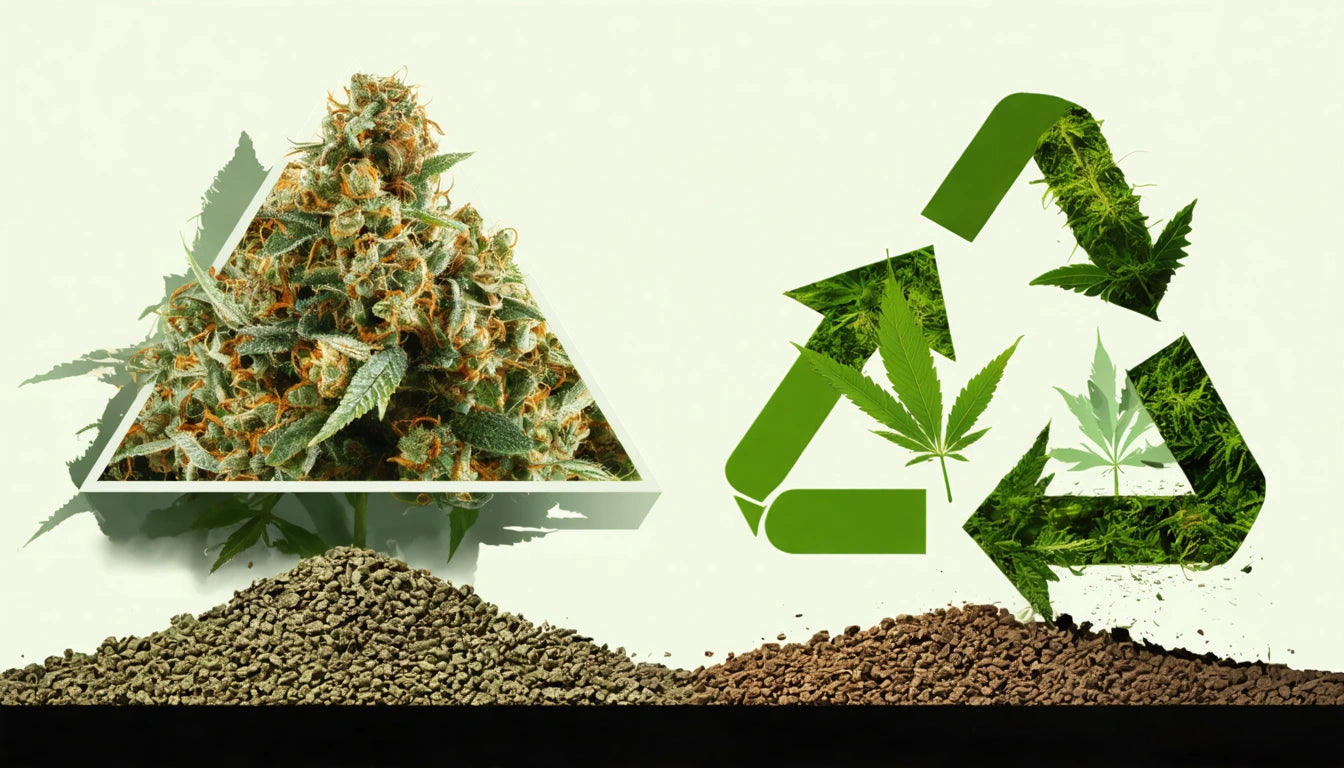Table of Contents
LED vs. Sodium Lighting: Comparing the Impact, Efficiency, and Benefits
The debate between LED and sodium lighting systems continues to evolve as indoor cultivation technology advances. Each lighting system offers distinct advantages in terms of energy consumption, heat output, light spectrum, and overall plant development. Understanding these differences helps growers make informed decisions that align with their cultivation goals, space constraints, and budget considerations.
LED vs. Sodium Lighting: Understanding the Fundamentals
Sodium vapor lamps, particularly High-Pressure Sodium (HPS), have been the industry standard for decades. These fixtures produce light by passing electricity through sodium gas, creating a distinctive yellow-orange glow. In contrast, Light Emitting Diodes (LEDs) generate light through a semiconductor process that can be engineered to produce specific wavelengths across the spectrum.
According to a comprehensive comparison between LED and HPS systems, the fundamental difference lies in how they convert electricity into usable light. HPS lights typically convert about 30% of energy into light, while modern LEDs can achieve conversion rates of up to 50-60%.
Energy Efficiency and Cost Comparison
When comparing sodium vs LED lighting from an efficiency standpoint, LEDs hold a clear advantage. A typical 1000W HPS fixture might be replaced by a 600-650W LED system while maintaining similar or improved light intensity at the canopy level.
Long-term Cost Analysis
- Initial Investment: LEDs require 2-3 times higher upfront cost
- Energy Savings: 30-50% reduction in electricity consumption with LEDs
- Bulb Replacement: HPS bulbs typically need replacement every 10,000-24,000 hours, while quality LEDs can last 50,000+ hours
- HVAC Requirements: Reduced cooling needs with LEDs due to lower heat output
Understanding electricity usage and costs reveals that while sodium lights have lower initial costs, LEDs typically achieve return on investment within 2-3 years through energy savings alone.
Light Spectrum and Plant Development
The quality of light significantly impacts plant morphology, flowering times, and cannabinoid production. Sodium vapor lamps vs LED fixtures differ substantially in their spectral output:
Sodium Light Spectrum
HPS lights produce a spectrum heavily weighted toward the yellow-orange-red range (570-620nm), which is beneficial during flowering but less ideal for vegetative growth. This limitation often requires growers to use Metal Halide (MH) lamps during the vegetative phase, then switch to HPS for flowering.
LED Light Spectrum
Modern LED fixtures can deliver customized spectrums that include blue, red, far-red, UV, and IR wavelengths. Top LED grow lights often feature adjustable spectrum controls, allowing growers to optimize light quality throughout different growth phases without changing fixtures.
When properly outfitted with reflective packaging materials like mylar bags for wall coverings, both lighting systems can achieve improved light distribution throughout the grow space, maximizing the efficiency of either system.
Changing Nutrient Requirements Under Different Light Sources
A common question among growers is whether LED lights cause cal-mag deficiency compared to traditional lighting. Research suggests that plants grown under LEDs often show different nutrient uptake patterns:
Calcium and Magnesium Under LEDs
Plants grown under LEDs typically demonstrate increased metabolism and growth rates, which can lead to higher calcium and magnesium requirements. This isn't technically a deficiency caused by the lights themselves, but rather an increased demand due to enhanced growth rates and metabolic changes.
Growers transitioning from sodium to LED lighting should monitor plants closely and adjust nutrient programs accordingly, often increasing calcium and magnesium supplementation by 10-20% during the transition period.
Installation and Maintenance Considerations
Beyond performance differences, practical installation and maintenance factors should influence lighting decisions:
Sodium Lighting Installation
- Requires ballasts, reflectors, and often additional cooling
- Typically heavier and bulkier than LED equivalents
- Needs greater hanging height to prevent heat damage to plants
- Regular bulb replacement and reflector cleaning required
LED Installation
- Generally lighter and more compact
- Often includes built-in heat sinks and cooling systems
- Can be positioned closer to the canopy
- Minimal maintenance beyond occasional cleaning
Safety considerations for LED installations include proper electrical load calculation, heat management, and ensuring fixtures meet relevant safety certifications.
Future Lighting Innovations and Industry Trends
The lighting landscape continues to evolve rapidly, with several emerging trends shaping future choices between LED vs sodium vapor technologies:
- Increased LED efficiency, with newer models achieving 3.0+ μmol/J efficiency ratings
- Development of spectrally tunable fixtures that adjust throughout the growth cycle
- Integration of lighting with environmental controls and data analytics
- Decreasing cost gap between HPS and LED technologies
- Hybrid lighting solutions that combine benefits of multiple technologies
As lighting technology advances, the advantages of LED systems over sodium options will likely continue to expand, particularly as energy costs rise and environmental considerations become increasingly important in cultivation decisions.
Whether choosing LED or sodium lighting, growers should evaluate their specific needs, budget constraints, and long-term operational goals to determine the optimal lighting solution for their cultivation environment.










Leave a comment
All comments are moderated before being published.
This site is protected by hCaptcha and the hCaptcha Privacy Policy and Terms of Service apply.